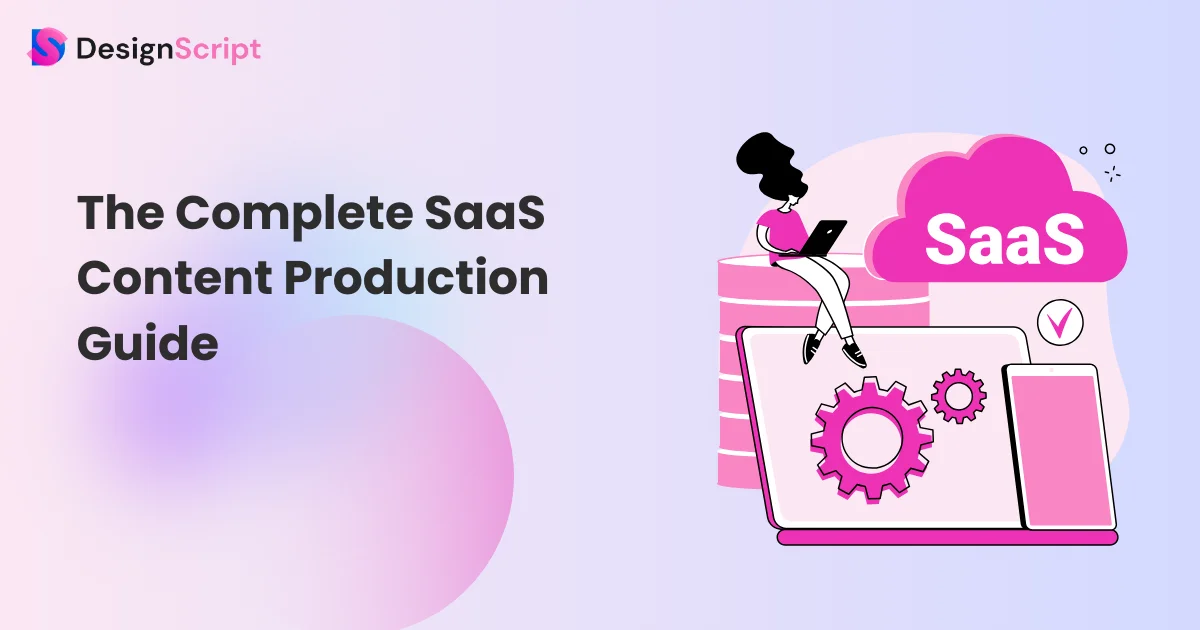The Complete SaaS Content Production Guide
Did you know 42% of startups fail because their marketing doesn’t align with their product? In today’s content-driven world, that stat is especially scary for SaaS companies.
That’s where SaaS content production comes in. It’s the key to building a brand that resonates with your audience and drives sales. Implementation of SaaS content marketing in your business is highly crucial. You will hardly come across a brand that isn’t doing it today. However, more than implementing a SaaS strategy is needed; implementing it in a correct manner is.
The good news? We’re here to walk you through the entire process, step-by-step.
This guide will help you understand the implementation process of such strategies; a complete guide to SaaS content production is what you need to take your business to new heights.
Table of Contents
- What is SaaS Content Production?
- Why Do You Need to Create Content for SaaS?
- Funnel-Based SaaS Content Production
- Types of Content for SaaS Companies
- SaaS Content Production Team Roles
- Steps To Create A Content Production Workflow
- SaaS Content Production Team
- Process of creating content
- Tools for SaaS Content Production
- Pros & Cons of SaaS Content Production
- Start your Content Engine Today!
- FAQs
What is SaaS Content Production?

SaaS Content production refers to the strategic use of content creation to attract, engage, and retain customers for SaaS businesses. It involves creating information and interactive, engaging, and entertaining content customized to the needs and wants of the targeted audience. SaaS content production aims to create awareness about brands and services, building relationships and conversions. Various forms of content marketing include case studies, educational videos, blogs, whitepapers, eBooks, webinars, and more. By providing your audience with these valuable insights and solving their problems, SaaS companies can establish trust and loyalty among their customers.
Why Do You Need to Create Content for SaaS?

To begin with, SaaS marketing helps companies to communicate the usefulness of their products and services over the Internet. This communication is highly focused on demonstrating flexibility, ease of integration, scalability, and cost-effectiveness with existing systems. In this step, marketers post resources like videos, case studies, and blogs to provide potential customers with learning material to help them make informed decisions. This marketing method further helps establish credibility and a strong relationship with their clients. By providing such details and insights, marketers prove how they can help their clients, which leads to a strong connection with the client and a reputation with the industry. Without SaaS marketing, one can run a business, but to escalate the growth, you need a catalyst, and SaaS marketing serves the purpose of that catalyst.
Funnel-Based SaaS Content Production

Top of the Funnel (ToFu)

The top-of-the-funnel phase is SaaS content production, which refers to the stage where you are trying to capture the audience’s and potential customers’ attention. The audience at this stage needs to be made aware of the brand or the products it is offering. Hence, the goal is to attract a broad audience and educate them about their pain points, needs, and potential solutions without any sales purpose or promotion activities. To effectively create awareness at the top of the funnel, SaaS companies employ content marketing strategies like educational blog posts, white papers and ebooks, infographics and visual content, webinars, and workshops.
1. Middle of the Funnel (MoFu)

The middle funnel refers to the phase at which the customers are past the awareness stage and actively looking for tools and strategies to resolve their issues. At this stage, the goal is to nurture the leads and provide them with more detailed information about your product or service to help them access and evaluate their options and move closer to making a purchase decision. This funnel level escalated its performance by posting reassuring and persuasive content like case studies, product demos, comparison guides, email nurturing campaigns, and free trials.
2. Bottom of the Funnel (BoFu)

The bottom of the funnel refers to the final stage of the customer’s life, where they are ready to decide. At this stage, the goal is to convert leads into paying customers by providing them with the information, reassurance, and incentives they need to take action. It is important to provide maximum attention and assistance at this stage. Hence, strategies like price/feature comparison, customer feedback, limited-time offers, discounts, personalized consultation, and support are implemented to engage the leads at the bottom of the funnel. Remember this is the last stage of the funnel and, therefore, your last chance to turn the visitor into a client.
Types of Content for SaaS Companies
1. Guides

Publishing blog posts that address common pain points, industry trends, and relevant topics can attract organic traffic from search engines and social media platforms. These posts are meant to provide information to the customers that guides them through the process of SaaS marketing they readily require. By providing valuable insights, tips, and advice without any expectations in return, you can easily win the loyalty of your audience.
2. Case Studies

Sharing scenarios and examples is crucial at this stage. These cases and stories help your audience understand how your product or service works to resolve various issues. Case studies and success stories highlight the tangible benefits and results your offering delivers, helping to build credibility and trust with potential customers.
3. Research Reports

Research reports refer to a detailed guide that presents findings, analysis, and insights on a specific topic or area of interest. They usually include statistics, charts, data, and metric analysis compiled from the research sources that help inform decision-making.
4. Infographics

Visual content such as infographics, can effectively convey complex information in a visually appealing format. It is scientifically proven that visual content is easy to understand but often attracts our attention quite easily.
5. White papers

Offering in-depth resources such as whitepapers or books can attract leads interested in learning more about a topic. Such modes will help you understand the percentage of your market actively looking for related services. You can demonstrate your expertise and position your brand as a trusted authority by providing valuable, actionable information.
6. Podcasts

Podcasts are among the most famous and useful ways to communicate with potential clients. Podcasts are audio shows available for streaming or download, covering various topics like news, storytelling, or education. This method allows listeners to enjoy episodes at their convenience, making podcasts a flexible and popular medium.
7. Webinars

Hosting master classes and webinars helps you connect directly with your audience. It makes you familiar with the problems that the audience is continuously facing, which in turn provides you with valuable insights into content creation focused on resolving those issues and, hence, catering to your customers’ needs.
SaaS Content Production Team Roles
| Role | Responsibilities |
| Writers | Create original, industry-relevant content. |
| Editors | Ensure content quality, consistency, and brand alignment. |
| Support Team | Handle design, multimedia, and project management for cohesive execution. |
Steps To Create A Content Production Workflow

This section breaks down the key steps to streamline your content creation process. Get ready to transform your content creation from a scramble to a smooth-running system that fuels your marketing efforts.
1. Build a Central Knowledge Base
A central knowledge base is crucial in any organization. To ensure availability of all the resources at one place companies must establish a centralized storage where all the relevant information, resources, and guidelines for content production are stored. The platform for storage will be more beneficial if it is cloud based like Google Drive and Dropbox. These platforms will help you access the material at any time through any device. Organize this information and material in an organized manner. This can be divided into various categories like style guides, brand messaging, content calendars, target audience, workflow processes, etc. Once this space is organized ensure to give its access to members in the team for effective working.
2. Hire a Team for writing and editing
Writing the content that must be posted is a crucial and creative task. Only a writer can express the ideas in words. Hence, having a team that only focuses on writing the content and editing enhances the efficiency and effectiveness of the overall marketing campaign. So, hire a team of writers, editors, proofreaders, and content strategists, depending on your budget. Use platforms like Linkedin, Upwork, or Indeed to find suitable candidates who match your job description and are interested in going beyond the assignment. Conduct interview based on their writing skills, industry knowledge, and communication ease to further confirm their work
3. Perform Keyword Research
Content marketing employs strategic keyword research and topic selection to optimize website content, blog posts, and other digital assets. With this approach, they align the content with relevant keywords and trending topics to enhance the ranking of businesses in search engines. This optimization ensures that a brand is ranked higher in the search engine and is often visited by organic crowds. This method increases the visibility of business and brand awareness and ultimately reaches the goal of increasing conversions.
3. Create Content
Once a knowledge base is built, a team is hired, and a thorough understanding of keywords is done. The final step is to create the required content. Make a calendar highlighting the deadline, formats, and topics based on the information you got from research and market analysis. Your content should be intriguing, engaging, and appealing to the masses to drive organic traffic. Moreover, ensure that every piece of your content aligns with your brand voice and reputation; remember that your content represents your business. Hence, any default on their part will result in significant problems.
SaaS Content Production Team

Building a great SaaS product is just the first step. To truly shine, you need a strong voice to spread the word. This section dives into the magic behind your content machine: the SaaS content production team. We’ll explore the different roles that make up a successful team and how they work together to craft content that drives results.
11. Team of writers
Your team of writers is your tool to express your organization’s vision to your target audience. They are responsible for generating original, compelling content that relates to your audience and helps them to understand your service better. Since writers are responsible for crafting blogs, articles, eBooks, social media content, and much more, you must ensure that your team has some knowledge about the industry, relevant trends, technologies, and your target audience. Lastly, ensure your writers understand your goal and objective behind the content they are supposed to write. It helps them to generate creative and effective content.
2. Team of Editors
Your team of writers is like the group leaders that fix the problems in your content. They play a crucial role in ensuring your content’s consistency, quality, and relevance. They enforce brand guidelines and editorial standards to maintain a perfect and clear brand voice. They do fact-checking, plagiarism checks, and much more. Their feedback helps the writers in the team refine their writing skills and learn about dynamic marketing strategies.
3. Content support team
To help the main content perform well on the industry stage, the content support team gives their 100% behind the scenes. Their assistance and expertise in the entire process ensure the smooth operation of the content. The content support team includes multimedia specialists, graphic designers, project managers, and administrative staff. While graphic designers are responsible for creating visually appealing assets, multimedia specialists produce videos and podcasts to engage the audience. Project managers overlook the content calendar and ensure everything happens within the deadline. After that, the administrative staff handles scheduling, invoicing, and vendor management tasks, allowing the content team to focus on creating impactful content.
Process of creating content

Having a clear plan is key to turning content ideas into reality. This section will walk you through the step-by-step process of creating content, from brainstorming winning topics to hitting publish with confidence. Get ready to transform your ideas into engaging content that resonates with your audience.
1. Create structures for content pieces.
Structure is crucial for any piece of content. It involves organizing information logically and in an engaging way to enhance readability and comprehension. To begin with, highlight the key points and main ideas to explain the piece’s context. Secondly, break down the content into pieces with descriptive headings to guide the reader through the material. Use bullet points and tabular representation to simplify the content for your audience, especially beginners. Remember, a well-structured piece of content enhances user experience and enhances engagement.
2. Write high-quality content
Content quality plays a crucial role in engagement rate and visibility. High-quality content involves informative, engaging, and relevant information that invites visitors. Start by conducting thorough research to gather accurate and up-to-date information. Craft compelling headlines, use clear and easy language, and avoid jargon and technical terms to make your content readable. Support your points with facts and figures to further prove your authenticity. It is obvious that high-quality content satisfies readers, improves search engine rankings, and attracts organic traffic.
3. Publish consistently
Consistency is crucial for everything, which is also true regarding content generation. It is essential for maintaining audience engagement and building a loyal following. First, plan a calendar of the entire month as corresponding posts that are supposed to be published within the deadline. When planning publication dates, consider factors such as peak engagement times, seasonable trends, and industry events. Always plan and have a backlog of content you are supposed to post to avoid any last-minute issues. Lastly, monitor the performance of your content regularly to understand what is working and what isn’t.
4. Refresh older content
Refreshing older content refers to updating and repurposing existing assets to ensure relevance and effectiveness over time. Once made, a piece of content can be used on various platforms to target different audiences. However, regularly updating those pieces according to the needs and wants of people is just as important for readability. Consider repurposing content into videos, podcasts, and various other forms of media that will further engage the audience and offer them simple and intriguing pieces of content
5. Build Backlinks
Creating backlinks is the most important element to organic traffic and the site rankings in search engines. Locate reliable websites, blogs, and online social communities where your audience will likely gather in your niche and talk about the topics related to your content. Connecting with the web admins, bloggers, and influencers through which the proposals of guest posting, content partnerships, and reciprocal linking can be done. Create outstanding, sharable content that adds value to other web pages and, as a result, makes your site to be cited. Access your backlink profile with Google Search Console or Ahrefs, pick and apply fresh linking opportunities, and weed out the poisonous and unnecessary links. Diversity and authority backlinking can add your website to search engine results and ultimately increase the website’s visibility and authority.
Tools for SaaS Content Production
Feeling inspired to create content? Great! But even the most brilliant ideas need the right tools to shine. Just like any artist needs their brushes, SaaS content production have their own toolkit. This section will explore some essential resources to streamline your workflow and help you craft content that truly connects with your audience.
1. Grammarly
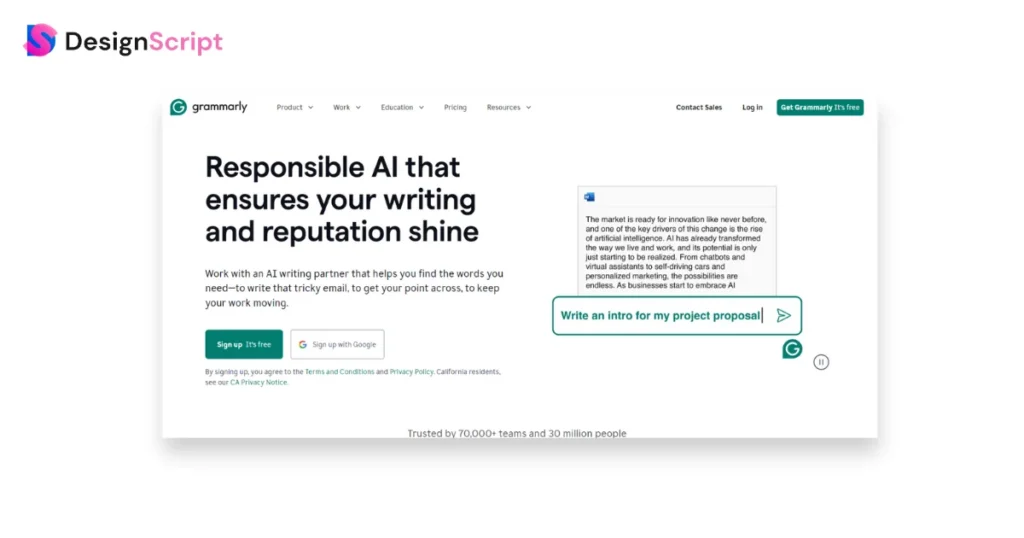
Grammarly is a mind-in-your-writing assistant that uses AI to generate flawless, readable texts. The functionality prompts all kinds of grammar, punctuation, spelling, and style mistakes as they are being typed, with alternatives for correcting them. Grammarly has browser extensions, desktop apps, and integrations into renowned writing platforms like Microsoft Word and Google Docs, and the MS Word plugin is due to be released very soon. It gives this feedback on grades, readability, impact as tone of the content, and engagement, thus helping writers to target the audience.
2. Hemingway App
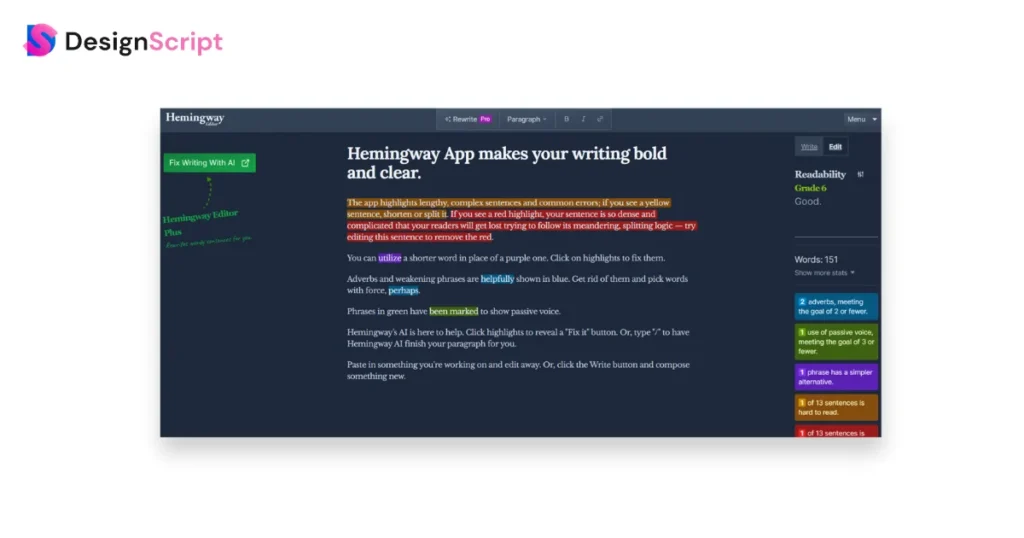
Hemingway’s writing is a tool that aims to make readability & clarity in writing more effective. It enables the underlining of long sentences, passive voice, adverbs, and difficult words, so the writer can make it plainer and more reader-friendly. Such a tool can be very useful for anybody who writes. The Hemingway App gives you a readability score. It hints at its various improvements, e.g., help breaking long sentences or using active voice. It is essential for creating such content as it allows you to properly express your ideas concisely, and they are likely to be more successful on the Web.
3. Ahrefs and SEMrush

Ahrefs and SEMrush are all-around SEO tools that give you data about keyword research, competitive analysis, backlink analysis, and audits. These tools assist SaaS content creators in keyword stability regarding value, position in search engines, competitor approaches, and the effectiveness and accuracy of content in terms of search engine results. Ahrefs and SEMrush provide a variety of features, such as the possibility of researching keywords, site audits, backlink analysis, rank-tracking, and so forth. These tools are critical for the SaaS marketers. They can help to raise the organic search business profile.
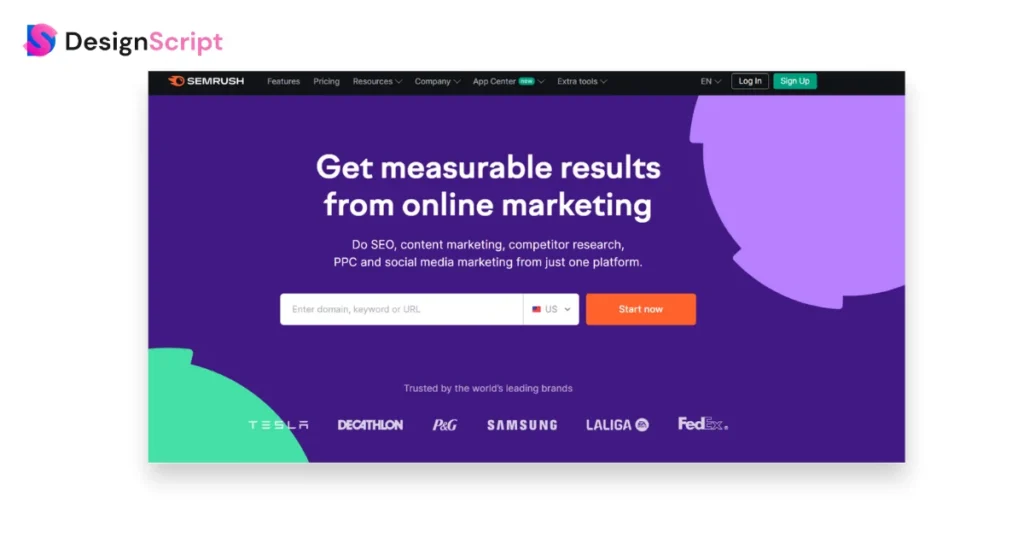
4. Frase
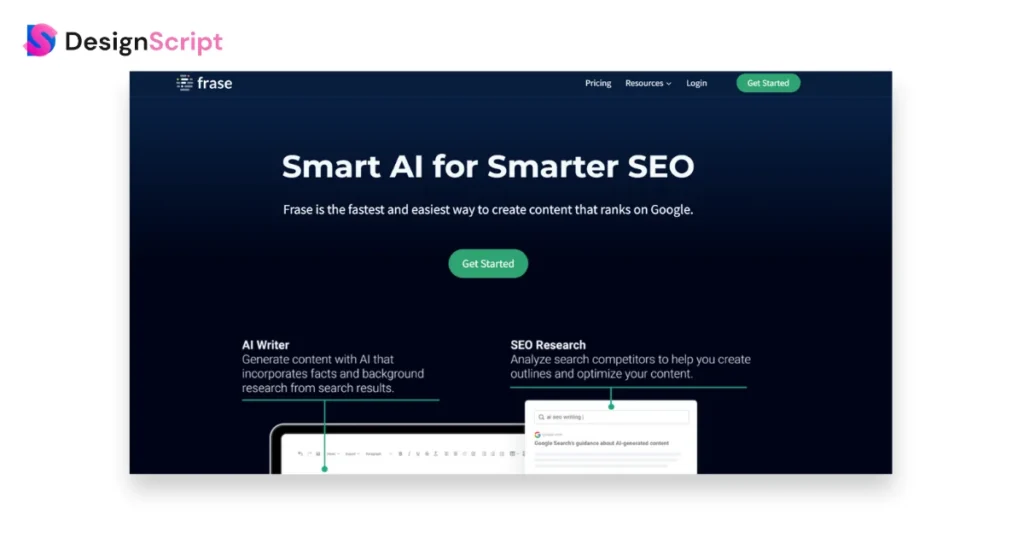
Frase is a content platform that utilizes artificial intelligence and helps SaaS companies’ content teams craft content that ranks well in search engines easily and effectively. From AI-powered briefs on content topics to in-built content optimization and answer optimization, it allows to carry out different types of SEO research and analysis and content generation. Frase searches first-page results lists to detect relevant things, questions that come to light, and main keywords, which leads content creators to produce more relevant and authoritative posts. Doing so also generates important information regarding user intent and content performance indicators through which competent teams can gauge the success of their content plans.
5. SurferSEO

SurferSEO is an SEO tool for on-page SEO that, by analyzing top-ranking pages in search, finds and proposes improvements to web content optimization. It measures linguistic parameters, including keyword frequency, word count, headings, and synonyms, to assist content developers in developing content that targets search engine algorithms and the users’ intentions. The tool is suitable for SaaS content producers because it can consistently gather and report on data-backed suggestions for quality enhancement and relevance. Hence, the tool becomes one of the key players in the marketing sphere.
6. ChatGPT

ChatGPT is an AI-trained language model that may be useful in all aspects of content creation for SaaS. There are plenty of features like content ideas generation, writing suggestions, answering questions, and even producing whole content articles based on prompts. Content creators can use ChatGPT to develop new ideas, get through writer’s block, increase the quality of the narrative, and even automate some parts of the creation. Thanks to powerful natural language processing (NLP), ChatGPT can automate the content creation and improve people’s productivity.
7. Google Analytics
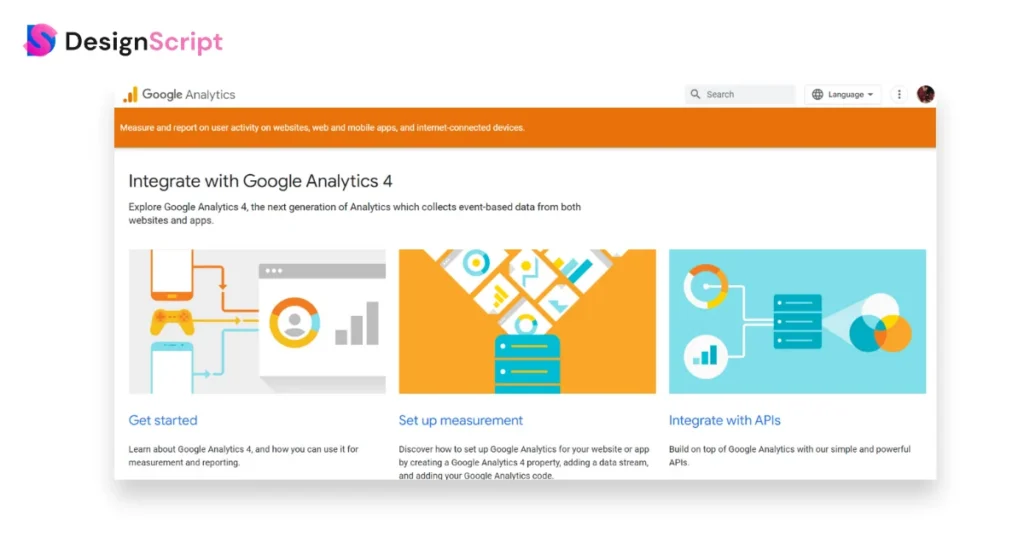
Google Analytics may be a capable web analytics tool offered by Google, permitting site owners to track and analyze different angles of their site’s execution. It gives important experiences into guest behavior, activity sources, and transformations, making it convenient for clients to get how individuals interact with their site. With Google Analytics, you can easily understand the workings of your strategies, showcase projects, distinguish which pages are most visited and popular, and optimize your location for better client involvement. By giving point-by-point reports, Google Analytics empowers informed decision-making to make significant changes in website execution and accomplish business objectives.
8. Google Search Console

Measuring and improving the Google Analytics and Google search console helps in website performance. As for Google Analytics, it gives an idea regarding website traffic, user experience, and conversion-oriented rates, turning the process of SaaS content production into a measurement game for the content teams performing it. Google Search Console provides data on search visibility, search queries, and site indexing, helping team members in discovering chances to increase search engine rankings and traffic driven by organic search.
Hence, by yielding these tools, SaaS content development teams can base their decisions on the data to improve their content strategy and reach their marketing targets.
Pros & Cons of SaaS Content Production
Pros
- Build brand awareness and trust with your audience.
- Guides customers through each stage of their buying journey.
- Boost your SEO visibility and attract organic traffic.
Cons
- Requires significant time and resources to produce quality content.
- Need regular updates to stay relevant.
Start your Content Engine Today!
If you haven’t yet embarked on your SaaS content production journey, consider this your moment to take action. Elevate your business’s growth and visibility through strategic content creation. SaaS content production combines creativity and structure, enabling you to engage your audience, drive traffic, and convert visitors into loyal customers.
By implementing the strategies outlined in this guide, you can unlock the full potential of your content marketing efforts and thrive in today’s competitive landscape.
Are you ready to get started? Begin crafting your content strategy today!
Invest in the right tools, build your team, and establish a workflow that paves the way for your success. Don’t hesitate, your audience is eager to connect with you!
FAQs
SaaS Content marketing holds an important place in the SaaS businesses tool kit; it helps the businesses to build a relation of authority along with the prospects and organic traffic.
Different kinds of content types are conducive to the marketing of SaaS. It is varied. They include blog articles, case studies, eBooks, webinars, and demo videos that further help in simplifying content.
The ROI metrics for content marketing in SaaS would be traffic beginning with the website traffic, engagement metrics such as time spent on each page or the number of visitors who bounced, lead generation (for example, form submissions), conversion rates, and up to customer retention.
SEO is essential for getting your content noticed online. By optimizing for relevant keywords and using best practices, you can attract more visitors and connect with potential customers effectively.
Refresh older content by updating it with new data and insights, and consider repurposing it into different formats, like turning a blog into a video. This keeps your content relevant and engaging for your audience.

